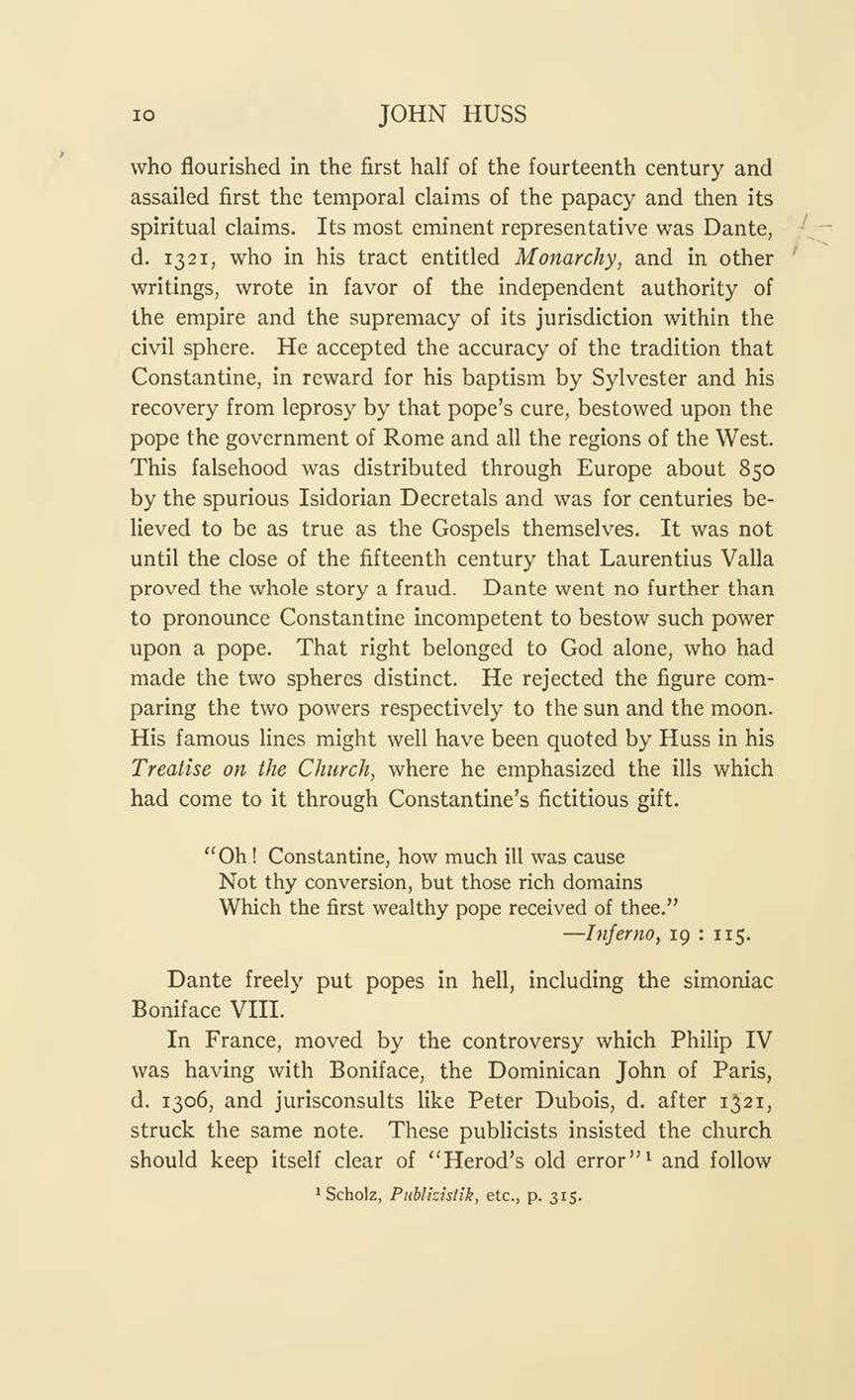who flourished in the first half of the fourteenth century and assailed first the temporal claims of the papacy and then its spiritual claims. Its most eminent representative was Dante, d. 1321, who in his tract entitled Monarchy, and in other writings, wrote in favor of the independent authority of the empire and the supremacy of its jurisdiction within the civil sphere. He accepted the accuracy of the tradition that Constantine, in reward for his baptism by Sylvester and his recovery from leprosy by that pope’s cure, bestowed upon the pope the government of Rome and all the regions of the West. This falsehood was distributed through Europe about 850 by the spurious Isidorian Decretals and was for centuries believed to be as true as the Gospels themselves. It was not until the close of the fifteenth century that Laurentius Valla proved the whole story a fraud. Dante went no further than to pronounce Constantine incompetent to bestow such power upon a pope. That right belonged to God alone, who had made the two spheres distinct. He rejected the figure comparing the two powers respectively to the sun and the moon. His famous lines might well have been quoted by Huss in his Trealise on the Church, where he emphasized the ills which had come to it through Constantine’s fictitious gift.
“Oh! Constantine, how much ill was cause
Not thy conversion, but those rich domains
Which the first wealthy pope received of thee.”
Dante freely put popes in hell, including the simoniac Boniface VIII.
In France, moved by the controversy which Philip IV was having with Boniface, the Dominican John of Paris, d. 1306, and jurisconsults like Peter Dubois, d. after 1321, struck the same note. These publicists insisted the church should keep itself clear of “Herod’s old error”[1] and follow
- ↑ Scholz, Publizistik, etc., p. 315.
